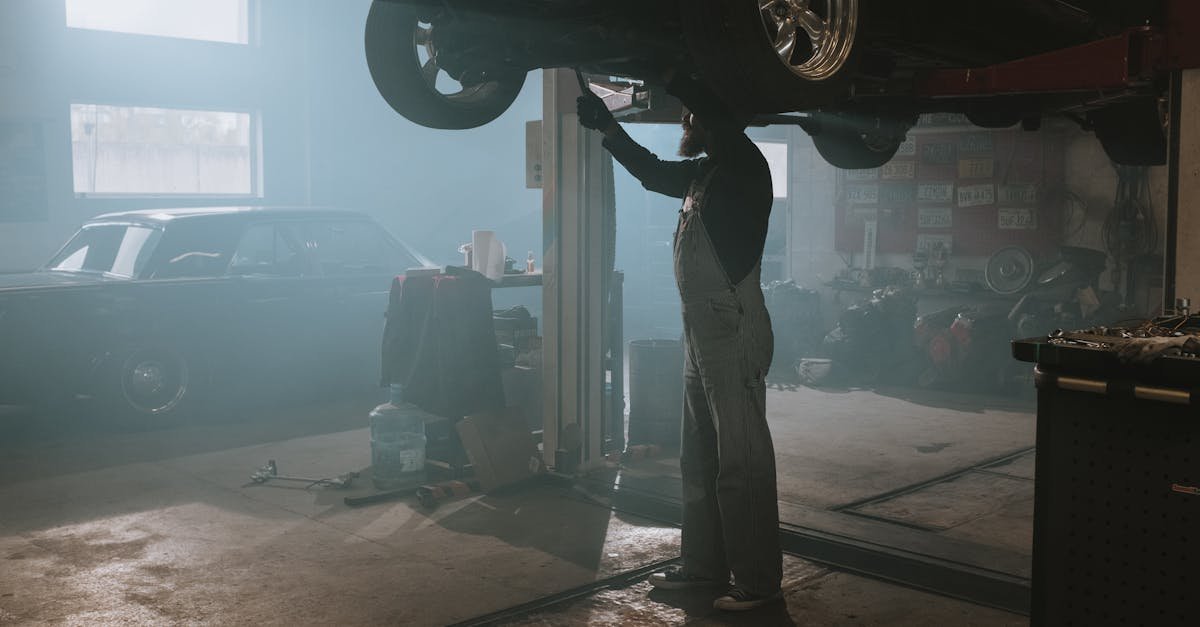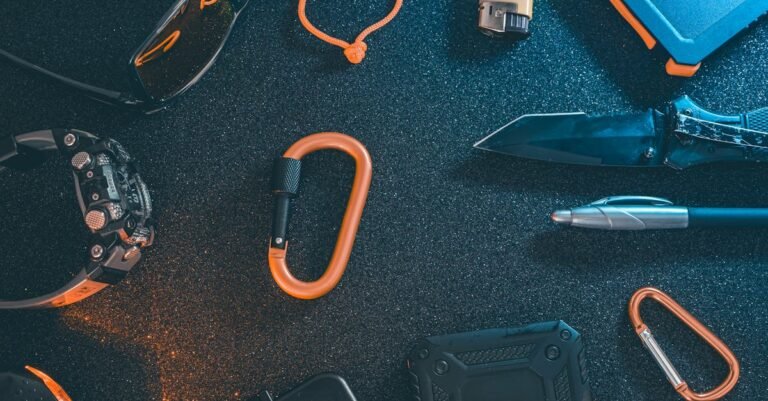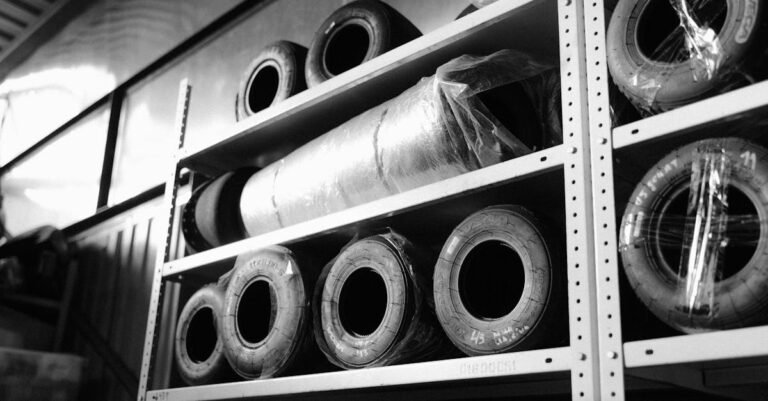Table Of Contents
- Basic Car Tools Every Owner Needs
- Why Bother with Basic Car Tools?
- The Essential Toolkit Breakdown
- Using Your Tools: Quick Guides
- Storing Your Toolkit
- Beyond the Basics: When to Call a Pro
- Conclusion: Your Roadside Companion
- FAQs
Basic Car Tools Every Owner Needs
Let’s be honest, most of us aren’t master mechanics. The thought of lifting the hood can be intimidating, right? But picture this: you’re miles from home, maybe late at night, and suddenly… clunk, hiss, or worse, silence. A dead battery, a flat tire, a loose connection – these things happen. Having a basic set of car tools isn’t about transforming you into a pit crew overnight; it’s about empowerment. It’s about having the ability to handle minor hiccups yourself, potentially saving you time, money, and a whole lot of stress. Think of it as your car’s first aid kit – essential for dealing with unexpected scrapes and bruises on the road.
Why Bother with Basic Car Tools?
Okay, so you pay for roadside assistance, or you have a trusted mechanic. Why clutter your trunk with tools you might never use? Well, there are some pretty compelling reasons. It’s not just about being prepared; it’s about being smart and self sufficient.
Saving Money on Minor Repairs
Think about some simple car issues. A loose battery terminal? A mechanic might charge you a diagnostic fee plus labor just to tighten a nut. A slightly deflated tire needing air? Waiting for roadside assistance can take ages, and a service station might charge you. Many small tasks, like changing a wiper blade, tightening a hose clamp, or even replacing a simple fuse, are totally doable yourself with the right basic tools. Each time you handle one of these minor issues yourself, you’re keeping cash in your wallet instead of paying someone else for a five minute job. It adds up surprisingly quickly!
Handling Roadside Emergencies
This is the big one. Imagine getting a flat tire on a busy highway or a deserted country road. Waiting for help can feel like an eternity, and depending on your location and cell service, it might be genuinely difficult to get assistance promptly. Having a jack, lug wrench, and spare tire (and knowing how to use them!) can turn a major ordeal into a manageable inconvenience. Similarly, a dead battery can leave you stranded. With jumper cables or a portable jump starter, you could be back on the road in minutes instead of waiting hours for a tow or jump.
Gaining Confidence and Independence
There’s a real sense of satisfaction that comes from solving a problem yourself, isn’t there? Knowing you have the basic tools and a little bit of know how to handle common car issues builds confidence. You’re less reliant on others and feel more in control when you’re behind the wheel. It demystifies the car a little bit, making you feel more connected to your vehicle and less intimidated by its inner workings. This confidence translates into being a more prepared and proactive car owner overall.
The Essential Toolkit Breakdown
So, what exactly should be in this magical toolkit? You don’t need a professional mechanic’s rolling chest. We’re talking about the core essentials that cover the most common roadside issues and simple maintenance tasks. Let’s break it down into a few categories.
The Absolute Must Haves
These are the non negotiables. If you carry nothing else, make sure you have these items stashed securely in your vehicle. They address the most frequent and potentially stranding problems.
Jumper Cables (or Jump Starter)
A dead battery is incredibly common. It can happen due to leaving lights on, extreme temperatures, or just an old battery giving up the ghost. Jumper cables allow you to use another vehicle’s battery to start your car. Look for a decent gauge (lower number means thicker, better cable) and ensure they are long enough to reach between two cars comfortably. Alternatively, a portable jump starter is a fantastic investment. It’s a self contained battery pack that can jump your car without needing another vehicle. Many also double as power banks for charging phones – bonus!
Tire Pressure Gauge
Proper tire pressure is crucial for safety, fuel economy, and tire longevity. Underinflated tires handle poorly, wear out faster, and can even lead to blowouts. Overinflated tires reduce traction and create a harsh ride. Don’t rely on the gauges at gas stations, which can be inaccurate. Get your own reliable tire pressure gauge – a simple pencil gauge is cheap and effective, or digital ones offer easy readability. Check your pressure monthly (when tires are cold) and before long trips. Your car’s recommended pressure is usually listed on a sticker in the driver’s side doorjamb.
Lug Wrench and Jack
These go hand in hand with your spare tire (make sure you have one and it’s inflated!). A flat tire is almost inevitable at some point. Your car likely came with a basic jack (usually a scissor jack) and a lug wrench. Familiarize yourself with where they are stored and how they work before you need them. The factory lug wrench can sometimes be flimsy; consider upgrading to a sturdier four way or telescoping lug wrench for better leverage. The jack needs to be placed on specific, reinforced points on your car’s frame – consult your owner’s manual!
Basic Screwdriver Set (Phillips & Flathead)
You’d be surprised how many things on a car are held together with screws. License plates, interior trim pieces, battery terminal covers, hose clamps – the list goes on. A basic set containing a few sizes of both Phillips head (cross shape) and flathead (slot shape) screwdrivers is invaluable. A multi bit screwdriver can save space, but having a couple of dedicated drivers in common sizes (#2 Phillips, medium flathead) is often more practical and robust.
Pliers (Multiple Types)
Pliers are the ultimate gripping, twisting, and pulling tools. You don’t need a huge collection, but a few key types are incredibly useful. Slip joint pliers are versatile for general grabbing. Needle nose pliers are essential for reaching into tight spots or handling small objects like fuses. Locking pliers (like Vise Grips) are fantastic for clamping onto stubborn bolts or holding things securely while you work. Having these three types covers a vast range of potential needs.
Leveling Up Your Toolkit
Once you have the absolute basics covered, adding a few more items can significantly expand the range of tasks you can tackle. These tools offer more capability for slightly more involved, but still manageable, repairs or adjustments.
Socket Set (Metric & SAE)
While pliers and adjustable wrenches can handle some nuts and bolts, nothing beats a proper socket set for speed and preventing stripped fasteners. Sockets provide a much better grip. You’ll likely need both Metric (millimeters) and SAE (inches, also called Standard) sizes, as cars often use a mix, especially older American models or newer imports. A basic 3/8 inch drive set with common sizes (e.g., 8mm 19mm and 3/8″ 3/4″) will handle most tasks. Look for a set that includes a ratchet handle and possibly an extension bar or two.
Adjustable Wrench
Sometimes called a Crescent wrench (a popular brand name), an adjustable wrench is a versatile tool that can fit various sizes of nuts and bolts. It’s not as precise as a socket or fixed wrench and can round off fasteners if not used carefully, but it’s incredibly handy when you encounter an odd size or don’t have the exact socket/wrench needed. Get a decent quality one (e.g., 8 or 10 inch) that adjusts smoothly and holds its setting.
Work Gloves and Rags
Working on cars is messy business. A sturdy pair of work gloves will protect your hands from grease, grime, hot surfaces, and scrapes. Mechanics gloves offer good dexterity, while heavier duty gloves provide more protection. Keep a supply of old rags or paper towels handy for wiping up spills, cleaning parts, and keeping your hands somewhat presentable. Microfiber towels are also great for cleaning without scratching.
Flashlight (or Headlamp)
Car trouble rarely happens in well lit conditions, does it? A reliable flashlight is absolutely essential for seeing what you’re doing under the hood, under the car, or even just finding things in the trunk at night. An LED flashlight is bright and energy efficient. Even better, consider a headlamp. It keeps both your hands free to work, which is a massive advantage when you’re trying to hold a tool and a part simultaneously.
Duct Tape and Zip Ties
Ah, the universal fixers! While not permanent solutions, duct tape and zip ties can be lifesavers for temporary roadside repairs. A flapping piece of trim? Duct tape it down. A loose wire or hose? Zip tie it securely out of the way. They can hold things together just long enough to get you safely to a mechanic or home. Keep a roll of quality duct tape (not the cheap stuff) and an assortment of zip tie sizes.
Safety First Additions
Your toolkit isn’t just about fixing the car; it’s also about keeping yourself safe during a breakdown, especially if you’re stranded on the side of the road.
First Aid Kit
This might seem obvious, but it’s easily overlooked. Whether you scrape a knuckle changing a tire or have a passenger with a minor injury, a basic first aid kit is crucial. Ensure it includes bandages, antiseptic wipes, gauze pads, medical tape, pain relievers, and any personal medications. Check expiration dates periodically.
Reflective Triangles or Flares
If you break down, especially at night or in poor visibility, making your vehicle visible to other drivers is paramount for safety. Set up reflective triangles or emergency flares well behind your car (check local regulations for proper distance) to warn oncoming traffic. Some LED emergency lights are also available now, offering a reusable and safer alternative to traditional flares.
Using Your Tools: Quick Guides
Having the tools is one thing; knowing the basics of how to use them is another. Here are quick refreshers on some common tasks.
Checking Tire Pressure
This is super easy! Unscrew the valve stem cap on your tire. Press the tire pressure gauge firmly onto the valve stem until the hissing stops. Read the pressure on the gauge. Compare it to the recommended pressure on your doorjamb sticker (not the maximum pressure listed on the tire sidewall). Add air if needed at a gas station or with a portable compressor. If it’s too high, use the small nub on the back of most gauges to press the pin inside the valve stem and release air in short bursts, checking frequently.
Changing a Flat Tire
Safety first! Pull over to a safe, level spot away from traffic. Turn on your hazard lights and set up reflective triangles. Find your jack, lug wrench, and spare tire. Consult your owner’s manual for the correct jacking points. Loosen the lug nuts slightly before jacking up the car (turn counter clockwise). Place the jack correctly and raise the vehicle until the flat tire is off the ground. Fully remove the lug nuts. Pull the flat tire straight off and replace it with the spare. Put the lug nuts back on and tighten them by hand in a star pattern. Lower the car until the tire just touches the ground, then fully tighten the lug nuts securely with the wrench (again, use a star pattern). Lower the car completely, remove the jack, and stow your flat tire and tools. Remember, most spare tires are temporary – get your flat fixed or replaced ASAP.
Jump Starting a Car
Park the working car close enough for the jumper cables to reach, but don’t let the vehicles touch. Turn off both cars. Open both hoods and identify the batteries and their positive (+) and negative (-) terminals. Connect one red (+) clamp to the positive terminal of the dead battery. Connect the other red (+) clamp to the positive terminal of the good battery. Connect one black (-) clamp to the negative terminal of the good battery. Finally, connect the last black (-) clamp to an unpainted metal surface on the engine block or frame of the dead car, away from the battery (this prevents sparks near the battery). Start the working car and let it run for a few minutes. Try starting the dead car. If it starts, leave it running and carefully remove the cables in the reverse order you connected them. Let the jumped car run for at least 15 20 minutes to recharge the battery.
Storing Your Toolkit
Don’t just toss everything loosely in the trunk! Tools rolling around can be noisy and get damaged or lost. Invest in a small, sturdy tool bag or a plastic toolbox. Organize your tools logically so you can find what you need quickly in an emergency. Keep heavier items like the jack secured so they don’t become projectiles in a sudden stop. Ensure your toolkit is easily accessible – not buried under luggage or sports equipment.
Beyond the Basics: When to Call a Pro
It’s crucial to know your limits. Basic tools are for basic problems. If you hear strange engine noises, experience braking issues, see warning lights you don’t understand, or smell unusual fumes, don’t try to be a hero. Anything involving the engine’s internals, transmission, complex electronics, brakes, or suspension is usually best left to a qualified mechanic. Trying to fix something complex without the proper knowledge or tools can easily make the problem worse and more expensive to repair. Your basic toolkit is for getting you out of a jam or handling simple upkeep, not for major surgery.
Conclusion: Your Roadside Companion
Building a basic car tool kit isn’t an expense; it’s an investment in peace of mind. It transforms you from a passive passenger to a proactive owner, ready to tackle common roadside woes. You don’t need to spend a fortune or become an expert overnight. Start with the absolute must haves and gradually add items as you feel comfortable. Having these tools readily available, along with a little know how, can make a huge difference when the unexpected happens. So, take a little time, assemble your kit, and drive with the added confidence that you’re prepared for whatever the road might throw your way. It’s your trusty roadside companion, always there when you need it.
FAQs
1. Do I really need both Metric and SAE sockets if I have a newer car?
While most modern cars primarily use metric fasteners, you might still encounter SAE sizes on aftermarket parts, battery terminals, or older components if you bought the car used. Having a basic set of both covers your bases more thoroughly and prevents frustration if you run into that one oddball bolt. It’s generally a worthwhile small investment for completeness.
2. Is the jack that came with my car good enough?
The scissor jack included with most cars is designed for emergency roadside tire changes and usually does the job. However, they can sometimes feel unstable and require significant effort to operate. If you anticipate needing to lift your car more often (e.g., for rotating tires yourself) or just want something sturdier and easier to use, investing in a small hydraulic bottle jack or a compact floor jack can be a good upgrade. Always ensure any jack you use is rated for your vehicle’s weight.
3. Should I get a torque wrench?
For a basic toolkit, a torque wrench isn’t strictly essential, but it’s highly recommended if you plan on changing your own wheels regularly. Lug nuts need to be tightened to a specific specification (found in your owner’s manual) to be safe – too loose and the wheel could wobble or come off, too tight and you risk damaging the studs or wheel. A torque wrench is the only way to guarantee the correct tightness. It’s a step up from the basic kit but a valuable addition for safety conscious owners.
4. How often should I check or replace items in my safety kit?
It’s a good idea to inspect your toolkit and safety items every 6 months or so. Check the pressure in your spare tire, make sure your flashlight/headlamp batteries are fresh (or the unit is charged), check expiration dates on first aid supplies and flares, and ensure tools haven’t rusted or seized up. Replace any depleted or expired items promptly.
5. Where’s the best place to learn how to use these tools?
Your car’s owner’s manual is the first place to look – it details procedures like changing a tire and jump starting specifically for your vehicle. Beyond that, there are countless reputable online resources, including YouTube channels dedicated to basic car maintenance and repair. Many community colleges or auto parts stores also offer basic car care workshops. Practicing simple tasks like checking tire pressure or locating the jacking points in your driveway is also a great way to build familiarity.









